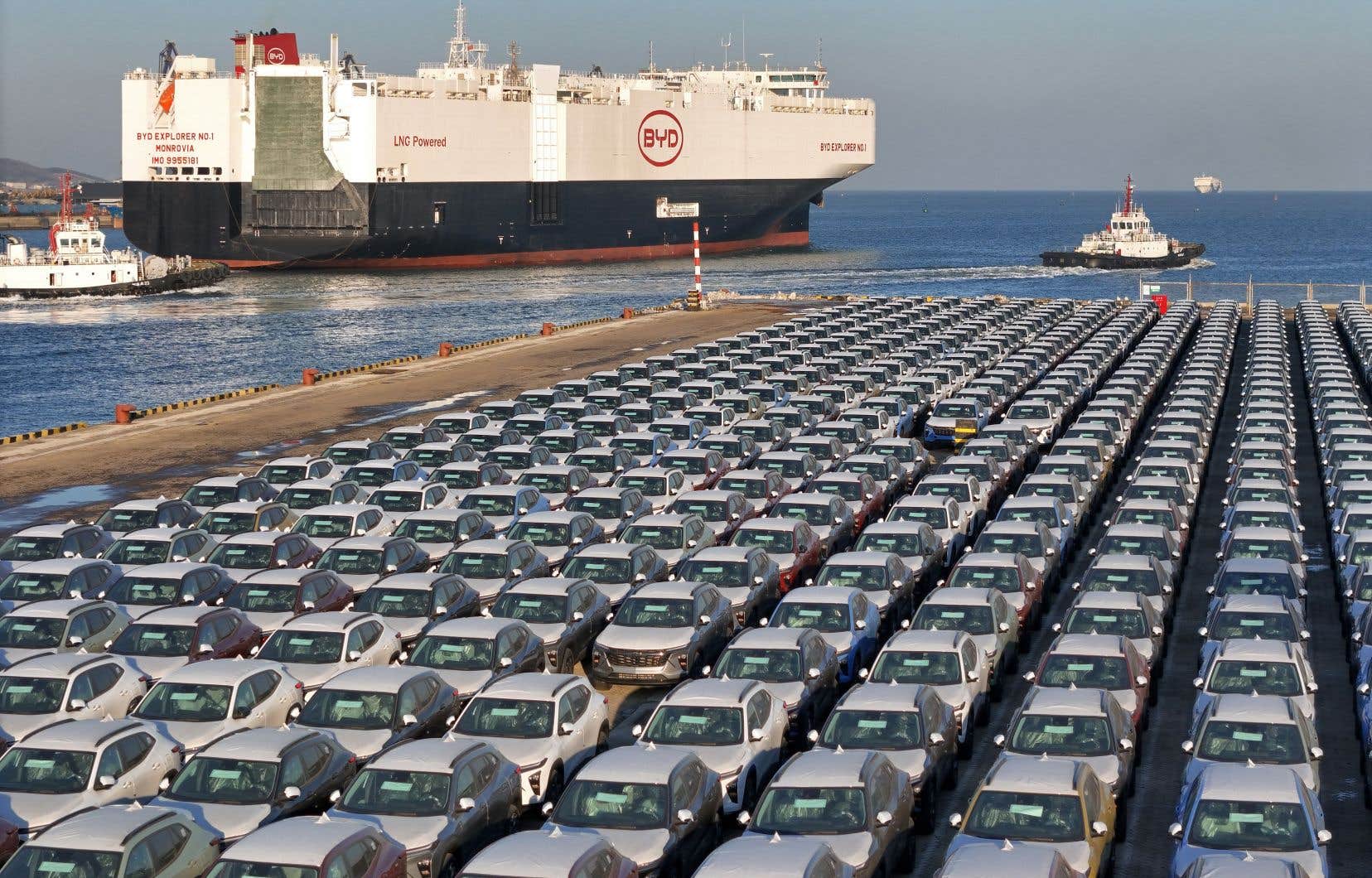China’s exports experienced a decline last year, the first since 2016, at a time when geopolitical tensions with the United States and sluggish global demand are penalizing a key engine of the second economic power.
Exports are historically an important lever of growth for the Asian giant and their performance has a direct impact on employment for thousands of companies in the sector.
The year 2023 was notably marked by nine months of decline in sales of Chinese products and services abroad.
Since November, exports have been on the rise again and they even accelerated in December year-on-year (+2.3%), according to figures published Friday by Chinese Customs.
But this increase must be put into perspective because the comparison is made with December 2022 when health restrictions against COVID-19 penalized activity in China.
The threat of recession in Europe, combined with high inflation, is now helping to weaken international demand for Chinese products.
Geopolitical tensions and the desire of certain Western countries to reduce their dependence on China or to diversify their supply chains also explain this decline.
Chinese exports face “an external environment whose complexity, severity and uncertainty are increasing,” Wang Lingjun, a Customs official, told the press.
Geopolitical tensions
Over the whole of 2023, all of the Asian giant’s exports contract (-4.6%), according to Customs figures in dollars.
This is a first since 2016.
In 2022, sales of Chinese products and services worldwide increased by another 7%.
Trade between China and the United States followed the same trend to experience its first contraction since 2019, in a context of geopolitical tensions between Beijing and Washington.
In 2023, the two leading economic powers exchanged $664.4 billion worth of goods and services, down 11.6% year-on-year.
The last annual contraction dates back to 2019, a consequence of the trade war launched against Beijing by former US President Donald Trump.
Trade between the two countries subsequently surged during the pandemic, with China then the main global supplier of products against Covid-19.
In 2022, trade between Beijing and Washington reached a record level of $759.4 billion.
Conversely, trade between China and Russia reached a record level in 2023.
Fragile recovery
The two neighboring countries have become notoriously closer politically and economically since the Russian invasion of Ukraine in 2022, which Beijing has not condemned.
Last year, China and Russia exchanged $240.1 billion worth of goods and services, according to Chinese Customs. This figure is up 26.3% year-on-year.
Beijing and Moscow had set their annual target at $200 billion, which was already a historic record. This threshold was crossed in November.
The publication of Trade figures comes before the highly anticipated growth figures next week.
Beijing was aiming for an increase of “around 5%” in gross domestic product (GDP) by 2023, a goal that could be difficult to achieve, some economists estimate.
In 2022, the Asian giant’s GDP grew by 3%, far from the official target of 5.5%, and at one of the lowest rates recorded by the country in four decades.
A sign of the fragility of the recovery, China was in deflation in December for the third consecutive month, according to official data published Friday.
This situation contrasts with ongoing inflation in major economies.
Deflation “reflects the slowdown in domestic demand” in a context of real estate crisis and unemployment particularly among young people, analysts from the investment bank Goldman Sachs estimate in a note.
